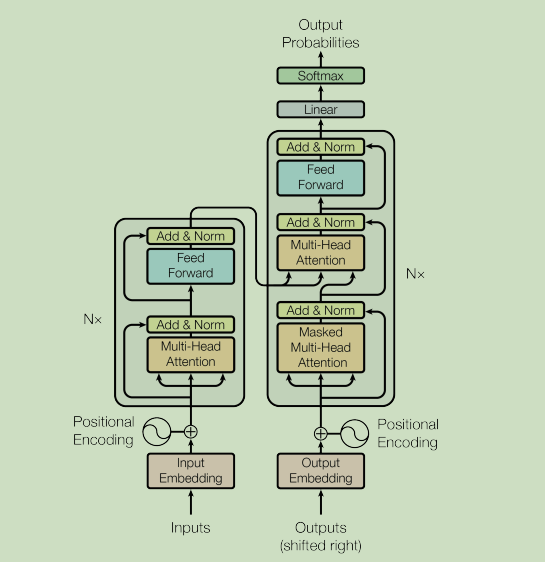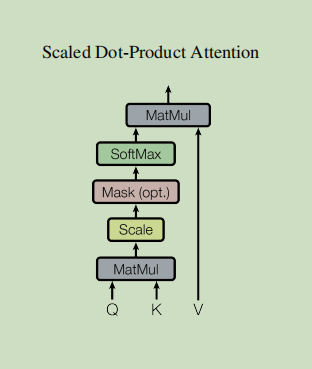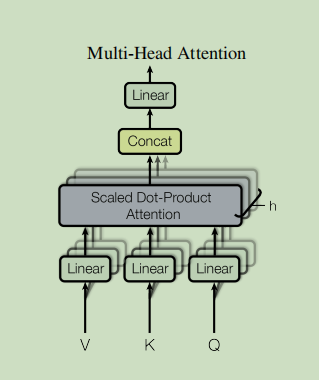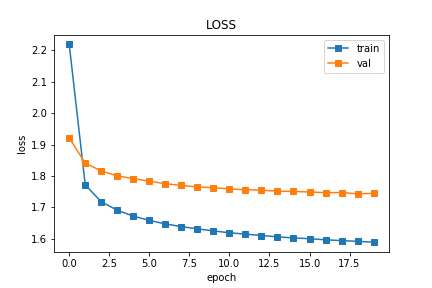Project introduction: Research on automatic code annotation generation technology based on transformer
Introduction: This is my graduation project, which mainly realizes the automatic generation of code comments. Generally speaking, it is to give a piece of code and then generate corresponding comments (functional comments).
The data set we used was provided by Hu Xing and others of Peking University. Their project address is: EMSE-DeepCom . Their paper:
- Deep code comment generation: use the Seq2Seq framework (the paper calls the model Deppcom) and take the AST sequence of the abstract syntax tree of the code as the input
- Deep code comment generation with hybrid legal and synchronous information: using the variant of Seq2Seq framework, two inputs (the model is called Hybrid_Deepcom in the paper) and AST and code as inputs.
Ahmad et al. Built a model based on trnasfarmer model and achieved good results. See the paper for details:
- A transformer based approach for source code summary: modify the location coding method based on the transformer model. Use code as input.
Data display:
Code (the code is java code, and each code is a complete method):
public synchronized void info ( string msg ) { log record record = new log record ( level . info , msg ) ; log ( record ) ; }
Comment (extracted from javadoc by Hu Xing et al. Each comment is a description of the corresponding method function):
logs a info message
explain:
We have created a project based on the Seq2Seq framework to explore the difference between the method using only the code itself as input and the method proposed by Hu Xing et al. The project directly: Research on automatic code annotation generation technology based on Seq2Seq
This project is based on the transformer framework to study the difference between the original transformer framework and the improved framework of Ahmad et al.
In addition:
My github project goes directly to: Code-Summarization
1. Data processing
import paddle from paddle.nn import Transformer from paddle.io import Dataset import os from tqdm import tqdm import time import numpy as np import matplotlib.pyplot as plt from nltk.translate.bleu_score import *
/opt/conda/envs/python35-paddle120-env/lib/python3.7/site-packages/matplotlib/__init__.py:107: DeprecationWarning: Using or importing the ABCs from 'collections' instead of from 'collections.abc' is deprecated, and in 3.8 it will stop working from collections import MutableMapping /opt/conda/envs/python35-paddle120-env/lib/python3.7/site-packages/matplotlib/rcsetup.py:20: DeprecationWarning: Using or importing the ABCs from 'collections' instead of from 'collections.abc' is deprecated, and in 3.8 it will stop working from collections import Iterable, Mapping /opt/conda/envs/python35-paddle120-env/lib/python3.7/site-packages/matplotlib/colors.py:53: DeprecationWarning: Using or importing the ABCs from 'collections' instead of from 'collections.abc' is deprecated, and in 3.8 it will stop working from collections import Sized 2021-12-23 10:37:18,678 - INFO - font search path ['/opt/conda/envs/python35-paddle120-env/lib/python3.7/site-packages/matplotlib/mpl-data/fonts/ttf', '/opt/conda/envs/python35-paddle120-env/lib/python3.7/site-packages/matplotlib/mpl-data/fonts/afm', '/opt/conda/envs/python35-paddle120-env/lib/python3.7/site-packages/matplotlib/mpl-data/fonts/pdfcorefonts'] 2021-12-23 10:37:19,106 - INFO - generated new fontManager /opt/conda/envs/python35-paddle120-env/lib/python3.7/site-packages/nltk/decorators.py:68: DeprecationWarning: `formatargspec` is deprecated since Python 3.5. Use `signature` and the `Signature` object directly regargs, varargs, varkwargs, defaults, formatvalue=lambda value: "" /opt/conda/envs/python35-paddle120-env/lib/python3.7/site-packages/nltk/lm/counter.py:15: DeprecationWarning: Using or importing the ABCs from 'collections' instead of from 'collections.abc' is deprecated, and in 3.8 it will stop working from collections import Sequence, defaultdict
1.1 data set path variables
code_path='/home/aistudio/data/data73043/camel_code.txt' comment_path='/home/aistudio/data/data73043/comment.txt'
1.2 add start token and end token for code and comments
def creat_dataset(a,b):
# a : code
# b: comment
with open(a,encoding='utf-8') as tc:
lines1=tc.readlines()
for i in range(len(lines1)):
lines1[i]="<start> "+lines1[i].strip('\n')+" <end>"
with open(b,encoding='utf-8') as ts:
lines2=ts.readlines()
for i in range(len(lines2)):
lines2[i]="<start> "+lines2[i].strip('\n')+" <end>"
if(len(lines1)!=len(lines2) ):
print("Data volume mismatch")
return lines1,lines2
code,comment=creat_dataset(code_path,comment_path)
print(code[0]) print(comment[0])
<start> public synchronized void info ( string msg ) { log record record = new log record ( level . info , msg ) ; log ( record ) ; } <end>
<start> logs a info message <end>
def build_cropus(data):
crpous=[]
for i in range(len(data)):
cr=data[i].strip().lower()
cr=cr.split()
crpous.extend(cr)
return crpous
1.3 construct a dictionary and return word – > id and id – > word It should be noted that: id – > in the word dictionary, if the frequency of word does not exceed frequnecy, the id will point to unk token
# Construct a dictionary, count the frequency of each word, and convert each word into an integer id according to the frequency
def build_dict(corpus,frequency):
# First, count the frequency (number of occurrences) of each different word and record it in a dictionary
word_freq_dict = dict()
for word in corpus:
if word not in word_freq_dict:
word_freq_dict[word] = 0
word_freq_dict[word] += 1
# Sort the words in this dictionary according to the number of occurrences. The higher the number of occurrences, the higher the ranking
# Generally speaking, high-frequency words are often pronouns such as I, the and you, while words with low frequency are often nouns, such as nlp
word_freq_dict = sorted(word_freq_dict.items(), key = lambda x:x[1], reverse = True)
# Construct three different dictionaries and store them respectively,
# Mapping relationship between each word and ID: word2id_dict
# Mapping relationship between each ID and word: id2word_dict
word2id_dict = {'<pad>':0,'<unk>':1}
id2word_dict = {0:'<pad>',1:'<unk>'}
# Start traversing each word from high to low according to the frequency, and construct a unique id for the word
for word, freq in word_freq_dict:
if freq>frequency:
curr_id = len(word2id_dict)
word2id_dict[word] = curr_id
id2word_dict[curr_id] = word
else:
word2id_dict[word]=1
return word2id_dict, id2word_dict
word_fre=2 code_word2id_dict,code_id2word_dict=build_dict(build_cropus(code),word_fre) comment_word2id_dict,comment_id2word_dict=build_dict(build_cropus(comment),word_fre)
code_maxlen=200 comment_maxlen=30 code_vocab_size=len(code_id2word_dict) comment_vocab_size=len(comment_id2word_dict) print(code_vocab_size) print(comment_vocab_size)
31921 22256
1.4 vectorization, convert code input into vector input, and unify the input length
def build_tensor(data,dicta,maxlen):
tensor=[]
for i in range(len(data)):
subtensor=[]
lista=data[i].split()
for j in range(len(lista)):
index=dicta.get(lista[j])
subtensor.append(index)
if len(subtensor) < maxlen:
subtensor+=[0]*(maxlen-len(subtensor))
else:
subtensor=subtensor[:maxlen]
tensor.append(subtensor)
return tensor
code_tensor=build_tensor(code,code_word2id_dict,code_maxlen) comment_tensor=build_tensor(comment,comment_word2id_dict,comment_maxlen) code_tensor=np.array(code_tensor) comment_tensor=np.array(comment_tensor)
1.5 dividing data set test:val:train=20000:20000:445812
test_code_tensor=code_tensor[:20000] val_code_tensor=code_tensor[20000:40000] train_code_tensor=code_tensor[40000:] test_comment_tensor=comment_tensor[:20000] val_comment_tensor=comment_tensor[20000:40000] train_comment_tensor=comment_tensor[40000:] print(test_code_tensor.shape[0]) print(val_code_tensor.shape) print(train_code_tensor.shape)
1.6 encapsulating data sets
class MyDataset(Dataset):
"""
Step 1: inherit paddle.io.Dataset class
"""
def __init__(self, code,comment):
"""
Step 2: implement the constructor and define the data set size
"""
super(MyDataset, self).__init__()
self.code = code
self.comment=comment
def __getitem__(self, index):
"""
Step 3: Implement__getitem__Methods, defining and specifying index How to obtain data and return a single piece of data (training data, corresponding label)
"""
return self.code[index], self.comment[index]
def __len__(self):
"""
Step 4: Implement__len__Method to return the total number of data sets
"""
return self.code.shape[0]
BATCH_SIZE=128 train_batch_num=train_code_tensor.shape[0]//BATCH_SIZE #3482 val_batch_num=val_code_tensor.shape[0]//BATCH_SIZE #156 print(train_batch_num) print(val_batch_num)
# Test defined dataset
train_dataset = MyDataset(train_code_tensor,train_comment_tensor)
train_loader = paddle.io.DataLoader(train_dataset, batch_size=BATCH_SIZE, shuffle=True,drop_last=True)
val_dataset=MyDataset(val_code_tensor,val_comment_tensor)
val_loader=paddle.io.DataLoader(val_dataset,batch_size=BATCH_SIZE,shuffle=True,drop_last=True)
2. Build Transformer model

2.1 location code
def get_angles(pos,i,d_model):
angle_rate=1/np.power(10000,(2*(i//2))/np.float32(d_model))
return pos*angle_rate
def get_position_embedding(sentence_length,d_model):
angle_rads=get_angles(np.arange(sentence_length)[:,np.newaxis],
np.arange(d_model)[np.newaxis,:],
d_model)
sines=np.sin(angle_rads[:,0::2])
cosines=np.cos(angle_rads[:,1::2])
position_embedding=np.concatenate([sines,cosines],axis=-1)
position_embedding=paddle.to_tensor(position_embedding[np.newaxis,...])
return paddle.cast(position_embedding,dtype='float32')
pos_encoding = get_position_embedding(50, 512)
print (type(pos_encoding))
print (pos_encoding.shape)
pos_encoding = pos_encoding.numpy()
plt.figure()
plt.pcolormesh(pos_encoding[0], cmap='RdBu')
plt.xlabel('Depth')
plt.xlim((0, 512))
plt.ylabel('Position')
plt.colorbar()
plt.show()
2.1 three mask modes
def create_padding_mask(seq):
zeo=paddle.zeros(seq.shape,seq.dtype)
padding_mask=paddle.cast(paddle.equal(seq,zeo),dtype='float32')
return paddle.unsqueeze(padding_mask,axis=[1,2])
def create_look_ahead_mask(length):
return paddle.tensor.triu((paddle.ones((length, length))),1)
def creat_mask(inp,tar):
encoder_padding_mask=create_padding_mask(inp)
encoder_decoder_padding_mask=create_padding_mask(inp)
look_ahead_mask=create_look_ahead_mask(tar.shape[1])
decoder_padding_mask=create_padding_mask(tar)
deocder_mask=paddle.maximum(decoder_padding_mask,look_ahead_mask)
return encoder_padding_mask,deocder_mask,encoder_decoder_padding_mask
2.3 zoom point attention

def scaled_dot_product_attention(q, k, v, mask):
# Transpose y before multiplication
matmul_qk = paddle.matmul(q, k, transpose_y=True) # (..., seq_len_q, seq_len_k)
# Zoom matmul_qk
dk = paddle.cast(paddle.shape(k)[-1], dtype='float32')
scaled_attention_logits = matmul_qk / paddle.sqrt(dk)
# Add the mask to the scaled tensor.
if mask is not None:
scaled_attention_logits += (mask * -1e9)
# softmax is normalized on the last axis (seq_len_k), so the score
# The sum equals one.
attention_weights = paddle.nn.functional.softmax(scaled_attention_logits, axis=-1) # (..., seq_len_q, seq_len_k)
output = paddle.matmul(attention_weights, v) # (..., seq_len_q, depth_v)
return output
2.4 bull attention

class MultiHeadAttention(paddle.nn.Layer):
def __init__(self, d_model, num_heads):
super(MultiHeadAttention, self).__init__()
self.num_heads = num_heads
self.d_model = d_model
assert d_model % self.num_heads == 0
self.depth = d_model // self.num_heads
self.wq = paddle.nn.Linear(d_model,d_model)
self.wk = paddle.nn.Linear(d_model,d_model)
self.wv = paddle.nn.Linear(d_model,d_model)
self.dense = paddle.nn.Linear(d_model,d_model)
def split_heads(self, x, batch_size):
"""Split the last dimension to (num_heads, depth).
Transpose the result so that the shape is (batch_size, num_heads, seq_len, depth)
"""
x = paddle.reshape(x, (batch_size, -1, self.num_heads, self.depth))
return paddle.transpose(x, perm=[0, 2, 1, 3])
def forward(self, v, k, q, mask):
batch_size = q.shape[0]
q = self.wq(q) # (batch_size, seq_len, d_model)
k = self.wk(k) # (batch_size, seq_len, d_model)
v = self.wv(v) # (batch_size, seq_len, d_model)
q = self.split_heads(q, batch_size) # (batch_size, num_heads, seq_len_q, depth)
k = self.split_heads(k, batch_size) # (batch_size, num_heads, seq_len_k, depth)
v = self.split_heads(v, batch_size) # (batch_size, num_heads, seq_len_v, depth)
# scaled_attention.shape == (batch_size, num_heads, seq_len_q, depth)
# attention_weights.shape == (batch_size, num_heads, seq_len_q, seq_len_k)
scaled_attention = scaled_dot_product_attention(q, k, v, mask)
scaled_attention = paddle.transpose(scaled_attention, perm=[0, 2, 1, 3]) # (batch_size, seq_len_q, num_heads, depth)
concat_attention = paddle.reshape(scaled_attention, (batch_size, -1, self.d_model)) # (batch_size, seq_len_q, d_model)
output = self.dense(concat_attention) # (batch_size, seq_len_q, d_model)
return output
temp_mha = MultiHeadAttention(d_model=512, num_heads=8) #y = tf.random.uniform((1, 60, 512)) # (batch_size, encoder_sequence, d_model) y= paddle.uniform((1,60,512)) out= temp_mha(y, k=y, q=y, mask=None) out.shape
2.5 point feedforward network
def point_wise_feed_forward_network(d_model, dff):
return paddle.nn.Sequential(
paddle.nn.Linear(d_model,dff), # (batch_size, seq_len, dff)
paddle.nn.ReLU(),
paddle.nn.Linear(dff,d_model) # (batch_size, seq_len, d_model)
)
2.6 encoder layer
class EncoderLayer(paddle.nn.Layer):
def __init__(self, d_model, num_heads, dff, rate=0.1):
super(EncoderLayer, self).__init__()
self.mha = MultiHeadAttention(d_model, num_heads)
self.ffn = point_wise_feed_forward_network(d_model, dff)
# If it is a single integer, this module will normalize on the last dimension (at this time, the dimension of the last dimension must be the same as this parameter)
self.layernorm1 = paddle.nn.LayerNorm(d_model,epsilon=1e-6)
self.layernorm2 = paddle.nn.LayerNorm(d_model,epsilon=1e-6)
self.dropout1 = paddle.nn.Dropout(p=rate)
self.dropout2 = paddle.nn.Dropout(p=rate)
def forward(self, x, mask):
attn_output= self.mha(x, x, x, mask) # (batch_size, input_seq_len, d_model)
attn_output = self.dropout1(attn_output)
out1 = self.layernorm1(x + attn_output) # (batch_size, input_seq_len, d_model)
ffn_output = self.ffn(out1) # (batch_size, input_seq_len, d_model)
ffn_output = self.dropout2(ffn_output)
out2 = self.layernorm2(out1 + ffn_output) # (batch_size, input_seq_len, d_model)
return out2
2.7 decoder layer
class DecoderLayer(paddle.nn.Layer):
def __init__(self, d_model, num_heads, dff, rate=0.1):
super(DecoderLayer, self).__init__()
self.mha1 = MultiHeadAttention(d_model, num_heads)
self.mha2 = MultiHeadAttention(d_model, num_heads)
self.ffn = point_wise_feed_forward_network(d_model, dff)
self.layernorm1 = paddle.nn.LayerNorm(d_model,epsilon=1e-6)
self.layernorm2 = paddle.nn.LayerNorm(d_model,epsilon=1e-6)
self.layernorm3 = paddle.nn.LayerNorm(d_model,epsilon=1e-6)
self.dropout1 = paddle.nn.Dropout(p=rate)
self.dropout2 = paddle.nn.Dropout(p=rate)
self.dropout3 = paddle.nn.Dropout(p=rate)
def forward(self, x, enc_output, look_ahead_mask, padding_mask):
# enc_output.shape == (batch_size, input_seq_len, d_model)
attn1= self.mha1(x, x, x, look_ahead_mask) # (batch_size, target_seq_len, d_model)
attn1 = self.dropout1(attn1)
out1 = self.layernorm1(attn1 + x)
attn2= self.mha2(enc_output, enc_output, out1, padding_mask) # (batch_size, target_seq_len, d_model)
attn2 = self.dropout2(attn2)
out2 = self.layernorm2(attn2 + out1) # (batch_size, target_seq_len, d_model)
ffn_output = self.ffn(out2) # (batch_size, target_seq_len, d_model)
ffn_output = self.dropout3(ffn_output)
out3 = self.layernorm3(ffn_output + out2) # (batch_size, target_seq_len, d_model)
return out3
2.8 encoder
class Encoder(paddle.nn.Layer):
def __init__(self, num_layers, d_model, num_heads, dff, input_vocab_size,maximum_position_encoding, rate=0.1):
super(Encoder, self).__init__()
self.d_model = d_model
self.num_layers = num_layers
self.embedding = paddle.nn.Embedding(input_vocab_size, d_model)
self.pos_encoding = get_position_embedding(maximum_position_encoding,self.d_model)
self.enc_layers = [EncoderLayer(d_model, num_heads, dff, rate) for _ in range(num_layers)]
self.dropout =paddle.nn.Dropout(p=rate)
def forward(self, x, mask):
seq_len = x.shape[1]
# Add embedding and location coding.
x = self.embedding(x) # (batch_size, input_seq_len, d_model)
x *= np.sqrt(self.d_model).astype(np.float32)
x +=self.pos_encoding[:, :seq_len, :]
x = self.dropout(x)
for i in range(self.num_layers):
x = self.enc_layers[i](x, mask)
return x # (batch_size, input_seq_len, d_model)
2.9 decoder
class Decoder(paddle.nn.Layer):
def __init__(self, num_layers, d_model, num_heads, dff, target_vocab_size,maximum_position_encoding, rate=0.1):
super(Decoder, self).__init__()
self.d_model = d_model
self.num_layers = num_layers
self.embedding = paddle.nn.Embedding(target_vocab_size, d_model)
self.pos_encoding = get_position_embedding(maximum_position_encoding, d_model)
self.dec_layers = [DecoderLayer(d_model, num_heads, dff, rate) for _ in range(num_layers)]
self.dropout = paddle.nn.Dropout(p=rate)
def forward(self, x, enc_output, look_ahead_mask, padding_mask):
seq_len = x.shape[1]
x = self.embedding(x) # (batch_size, target_seq_len, d_model)
x *= np.sqrt(self.d_model).astype(np.float32)
x += self.pos_encoding[:, :seq_len, :]
x = self.dropout(x)
for i in range(self.num_layers):
x= self.dec_layers[i](x, enc_output,look_ahead_mask, padding_mask)
# x.shape == (batch_size, target_seq_len, d_model)
return x
class Trans(paddle.nn.Layer):
def __init__(self, num_layers, d_model, num_heads, dff, input_vocab_size,target_vocab_size, pe_input, pe_target, rate=0.1):
super(Trans, self).__init__()
self.encoder = Encoder(num_layers, d_model, num_heads, dff, input_vocab_size, pe_input, rate)
self.decoder = Decoder(num_layers, d_model, num_heads, dff, target_vocab_size, pe_target, rate)
self.final_layer = paddle.nn.Linear(d_model,target_vocab_size)
def forward(self, inp, tar, enc_padding_mask, look_ahead_mask, dec_padding_mask):
enc_output = self.encoder(inp, enc_padding_mask) # (batch_size, inp_seq_len, d_model)
# dec_output.shape == (batch_size, tar_seq_len, d_model)
dec_output = self.decoder(tar, enc_output, look_ahead_mask, dec_padding_mask)
final_output = self.final_layer(dec_output) # (batch_size, tar_seq_len, target_vocab_size)
return final_output
2.10 super parameter setting
num_layers = 4 d_model = 256 dff = 512 num_heads = 8 dropout_rate = 0.2
trans = Trans(num_layers,d_model,num_heads,dff, code_vocab_size,comment_vocab_size,pe_input=code_vocab_size, pe_target=comment_vocab_size)
for batch_id, data in enumerate(train_loader()):
x_data = data[0]
y_data = data[1]
y_inp=y_data[:,:-1]
y_real=y_data[:,1:]#[batch_size,seq_len]
encoder_padding_mask,deocder_mask,encoder_decoder_padding_mask=creat_mask(x_data,y_inp) print(encoder_padding_mask.shape) print(deocder_mask.shape) print(encoder_decoder_padding_mask.shape) break
paddle.summary(trans,[(128,200),(128,29),(128, 1, 1, 200),(128, 1, 29, 29),(128, 1, 1, 200)],dtypes='int64')
3. Training
epochs=20
def draw_loss(a,b):
x_list=[]
for i in range(len(a)):
x_list.append(i)
plt.title("LOSS")
plt.xlabel('epoch')
plt.ylabel('loss')
plt.plot(x_list,a,marker='s',label="train")
plt.plot(x_list,b,marker='s',label="val")
plt.legend()
plt.savefig('/home/aistudio/output/LOSS.png')
plt.show()
def train():
#clip = paddle.nn.ClipGradByGlobalNorm(clip_norm=5.0)
scheduler = paddle.optimizer.lr.NoamDecay(d_model, warmup_steps=4000)# ,verbose=True
# opt=paddle.optimizer.Adam(learning_rate=scheduler,beta1=0.9, beta2=0.98, epsilon=1e-09,parameters=trans.parameters(),grad_clip=clip)
opt=paddle.optimizer.Adam(learning_rate=scheduler,beta1=0.9, beta2=0.98, epsilon=1e-09,parameters=trans.parameters())
ce_loss = paddle.nn.CrossEntropyLoss(reduction='none')
train_loss=[]
val_loss=[]
for epoch in range(epochs):
print("epoch:{}".format(epoch))
train_epoch_loss=0
# Model training is declared here and drpout is used
trans.train()
for batch_id, data in enumerate(train_loader()):
x_data = data[0]
y_data = data[1]
y_inp=y_data[:,:-1]
y_real=y_data[:,1:]#[batch_size,seq_len]
encoder_padding_mask,deocder_mask,encoder_decoder_padding_mask=creat_mask(x_data,y_inp)
pre=trans(x_data,y_inp,encoder_padding_mask,deocder_mask,encoder_decoder_padding_mask)
#[batch_size,seq_len,vocab_size]
batch_loss=ce_loss(pre,y_real)
# Eliminate the effect of padding 0
zeo=paddle.zeros(y_real.shape,y_real.dtype)
mask=paddle.cast(paddle.logical_not(paddle.equal(y_real,zeo)),dtype=pre.dtype)
batch_loss*=mask
batch_loss=paddle.mean(batch_loss)
train_epoch_loss+=batch_loss.numpy()
batch_loss.backward()
if batch_id%100==0:
print('batch=',batch_id,' batch_loss= ',batch_loss.numpy())
# Update parameters
opt.step()
# Gradient clearing
opt.clear_grad()
#Learning rate update
scheduler.step()
#break
ava_loss=train_epoch_loss/train_batch_num
train_loss.append(ava_loss)
print("train epoch: {} AVALOSS: {}\n".format(epoch,ava_loss))
#break
val_epoch_loss=0
# The declaration model does not use dropout in prediction
trans.eval()
for batch_id, data in enumerate(val_loader()):
x_data = data[0]
y_data = data[1]
y_inp=y_data[:,:-1]
y_real=y_data[:,1:]
encoder_padding_mask,deocder_mask,encoder_decoder_padding_mask=creat_mask(x_data,y_inp)
pre=trans(x_data,y_inp,encoder_padding_mask,deocder_mask,encoder_decoder_padding_mask)
batch_loss=ce_loss(pre,y_real)
# Eliminate the effect of padding 0
zeo=paddle.zeros(y_real.shape,y_real.dtype)
mask=paddle.cast(paddle.logical_not(paddle.equal(y_real,zeo)),dtype=pre.dtype)
batch_loss*=mask
batch_loss=paddle.mean(batch_loss)
val_epoch_loss+=batch_loss.numpy()
if batch_id%100==0:
print('batch=',batch_id,' batch_loss= ',batch_loss.numpy())
ava_loss=val_epoch_loss/val_batch_num
val_loss.append(ava_loss)
print("val epoch: {} AVALOSS: {}\n".format(epoch,ava_loss))
# At this point, the training is over. Draw the loss diagram below
draw_loss(train_loss,val_loss)
train()
3.1 result display 20epochs

3.2 parameter storage
paddle.save(trans.state_dict(), "/home/aistudio/output/trans_net.pdparams") paddle.save(opt.state_dict(), "/home/aistudio/output/opt.pdopt")
4. Result prediction
4.1 save forecast results to file
The prediction here is not to read the model parameters from the file, but to predict directly after the training is completed. Later, there is time to add and load the prediction from the saved model parameters.
def evalute(code):
result=''
# code.shape(1,500)
code=paddle.unsqueeze(code,axis=0)
# decoder_input.shape(1,1)
decoder_input=paddle.unsqueeze(paddle.to_tensor([comment_word2id_dict['<start>']]),axis=0)
for i in range(comment_maxlen):
encoder_padding_mask,decoder_mask,encoder_decoder_padding_mask=creat_mask(code,decoder_input)
#(batch_size,output_target_len,target_vocab_size)
pre=trans(code,decoder_input,encoder_padding_mask,decoder_mask,encoder_decoder_padding_mask)
pre=pre[:,-1:,:]
pre_id=paddle.argmax(pre,axis=-1)
# print(pre_id)
predicted_id = paddle.cast(pre_id, dtype='int64')
# print(predicted_id)
pre_id=pre_id.numpy()[0][0]
# print(pre_id)
if comment_id2word_dict[pre_id]=='<end>':
return result
result+=comment_id2word_dict[pre_id]+' '
decoder_input=paddle.concat(x=[decoder_input,predicted_id],axis=-1)
return result
def translate():
with open('/home/aistudio/output/result.txt','w+') as re:
for i in tqdm(range(len(test_code_tensor))):
#for i in range(100):
result=evalute(paddle.to_tensor(test_code_tensor[i]))
re.write(result+'\n')
#print(result)
translate()
4.2 example display of results:
with open('/home/aistudio/output/result.txt','r') as re:
pre=re.readlines()
with open(code_path,'r') as scode:
code=scode.readlines()
with open(comment_path,'r') as scomment:
comment=scomment.readlines()
for i in range(5):
print('code: ',code[i].strip())
print('True notes:',comment[i].strip())
_tensor))):
#for i in range(100):
result=evalute(paddle.to_tensor(test_code_tensor[i]))
re.write(result+'\n')
#print(result)
translate()
4.2 example display of results:
with open('/home/aistudio/output/result.txt','r') as re:
pre=re.readlines()
with open(code_path,'r') as scode:
code=scode.readlines()
with open(comment_path,'r') as scomment:
comment=scomment.readlines()
for i in range(5):
print('code: ',code[i].strip())
print('True notes:',comment[i].strip())
print('Forecast notes:',pre[i])
code: public synchronized void info ( string msg ) { log record record = new log record ( level . info , msg ) ; log ( record ) ; }
True notes: logs a info message
Forecast notes: log a message to log log
code: public void handle gateway receiver create ( gateway receiver recv ) throws management exception { if ( ! is service initialised ( str_ ) ) { return ; } if ( ! recv . is manual start ( ) ) { return ; } create gateway receiver m bean ( recv ) ; }
True notes: handles gateway receiver creation
Forecast notes: create a new service .
code: public void data changed ( i data provider data provider ) ;
True notes: this method will be notified by data provider whenever the data changed in data provider
Forecast notes: adds a data to the model .
code: public void range ( i hypercube space , i visit kd node visitor ) { if ( root == null ) { return ; } root . range ( space , visitor ) ; }
True notes: locate all points within the twodtree that fall within the given ihypercube and visit those nodes via the given visitor .
Forecast notes: returns the number of elements in the given node .
code: public void handle disk creation ( disk store disk ) throws management exception { if ( ! is service initialised ( str_ ) ) { return ; } disk store m bean bridge bridge = new disk store m bean bridge ( disk ) ; disk store mx bean disk store m bean = new disk store m bean ( bridge ) ; object name disk store m bean name = m bean jmx adapter . get disk store m bean name ( cache impl . get distributed system ( ) . get distributed member ( ) , disk . get name ( ) ) ; object name changed m bean name = service . register internal m bean ( disk store m bean , disk store m bean name ) ; service . federate ( changed m bean name , disk store mx bean . class , bool_ ) ; notification notification = new notification ( jmx notification type . dis k_ stor e_ created , member source , sequence number . next ( ) , system . current time millis ( ) , management constants . dis k_ stor e_ create d_ prefix + disk . get name ( ) ) ; member level notif emitter . send notification ( notification ) ; member m bean bridge . add disk store ( disk ) ; }
True notes: handles disk creation .
Forecast notes: called when the service is used to be called when the service has been assigned the system .
Project summary
This project is a part of my undergraduate graduation project, which studies the task of automatic generation of code comments. The Transformer network framework is used. Interested friends can study it. References: Deep code comment generation, Deep code comment generation with hybrid legal and synchronous information, a Transformer based approach for source code summary